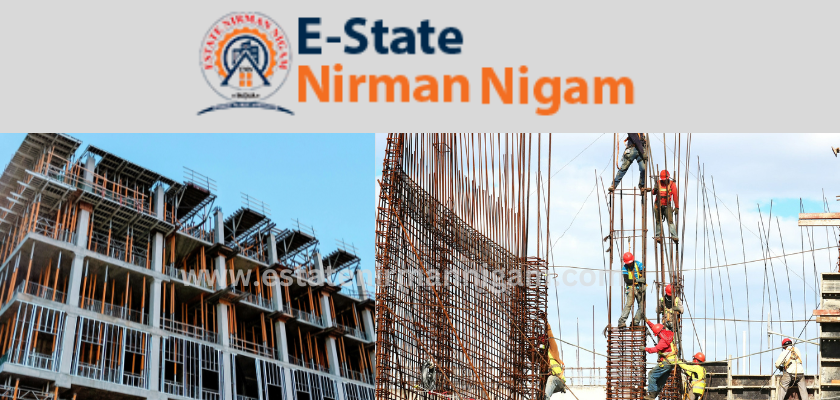
,http://estatenirmannigam.in also known as the Water Board,http://estatenirmannigam.in plays a crucial role in ensuring the efficient management of water resources and supply in many parts of the world. Though the specific functions and responsibilities of Jal Nigams can vary from country to country, they typically focus on providing water and sanitation services to both urban and rural populations. This article will delve into the objectives, operations, challenges, and future prospects of Jal Nigam to shed light on its significance in today’s world.
1. Background and Objectives:
Jal Nigam is an organization dedicated to water resource management and the provision of water and sanitation services. The organization’s goals often include:
Ensuring Adequate Water Supply: Jal Nigams aim to ensure a reliable and continuous supply of water to households and industries in their jurisdiction.
Promoting Sanitation: They are often responsible for implementing and maintaining sanitation systems, such as sewage treatment and disposal.
Conservation and Management: http://estatenirmannigam.inJal Nigams strive to conserve water resources and manage them efficiently to meet current and future needs.
Promoting Sustainable Practices: By encouraging water conservation and reducing water wastage, Jal Nigams support sustainable practices for the betterment of communities and the environment.
2. Organizational Structure:
Jal Nigams typically function as state or local government agencies, operating
as autonomous bodies with their own governance structure. The organizational hierarchy includes:
Board of Directors: Overseeing operations and policy decisions.
Management: Handling day-to-day operations and administration.
Engineering and Technical Staff: Designing, constructing, and maintaining water supply and sanitation infrastructure.
Finance and Accounts: Managing budgets, revenue collection, and financial planning.

Customer Support: http://estatenirmannigam.inAddressing customer queries, complaints, and requests.
3. Operations and Services:
The core functions and services provided by Jal Nigam include:
Water Supply: Jal Nigams operate and maintain water supply systems, including the extraction, treatment, storage, and distribution of water.http://estatenirmannigam.in
Sanitation and Sewage: Managing sewage treatment and disposal to
ensure public health and environmental safety.
Infrastructure Development: Planning, designing, and constructing water and sanitation infrastructure such as pipelines, water treatment plants, and sewage treatment plants.http://estatenirmannigam.in
Quality Assurance: Monitoring water quality and ensuring compliance with safety and quality standards.
Public Awareness and Education: Raising awareness about water conservation and efficient use of water resources.
4. Challenges Faced by Jal Nigams:http://estatenirmannigam.in
Jal Nigams face numerous challenges in their pursuit of providing quality water and sanitation services:
Population Growth: Increasing population puts pressure on existing water supply and sanitation systems, leading to the need for constant upgrades and expansions.http://estatenirmannigam.in
Water Scarcity: Climate change and over-extraction of water sources can lead to water scarcity, impacting water availability.
Aging Infrastructure:http://estatenirmannigam.in Older water and sanitation infrastructure may require significant investment for maintenance, repair, and modernization.
Funding and Budget Constraints: Limited funding can hinder the ability of Jal Nigams to execute projects and maintain high standards.
Non-Revenue Water (NRW): Water losses due to leaks, theft, or inaccurate metering can impact the financial sustainability of Jal Nigams.http://estatenirmannigam.in
Water Quality: Ensuring consistent water quality across different regions is a complex challenge.
5. Future Prospects and Opportunities:

To overcome challenges and improve water and sanitation services, Jal Nigams can focus on the following strategies:
Technological Innovations: Adopting new technologies such as smart meters, automated systems, and data analytics to improve efficiency and reduce water loss.http://estatenirmannigam.in
Public-Private Partnerships (PPPs): Collaborating with private entities can bring in investment and expertise for infrastructure development.
Community Engagement: Involving the community in water conservation efforts and decision-making can lead to more sustainable outcomes.
Integrated Water Resource Management (IWRM):http://estatenirmannigam.in Implementing IWRM can help optimize water use and manage resources more effectively.
Renewable Energy: Utilizing renewable energy sources to power water treatment and supply systems can reduce operational costs and environmental impact.
6. Conclusion:
http://estatenirmannigam.inJal Nigam plays a vital role in managing water resources and providing water and sanitation services. Despite facing challenges such as water scarcity, population growth, and funding constraints, Jal Nigams continue to work toward improving services and achieving sustainability. Through technological innovations, strategic partnerships, and community involvement, Jal Nigams can pave the way for a secure and sustainable water futurehttp://estatenirmannigam.in


